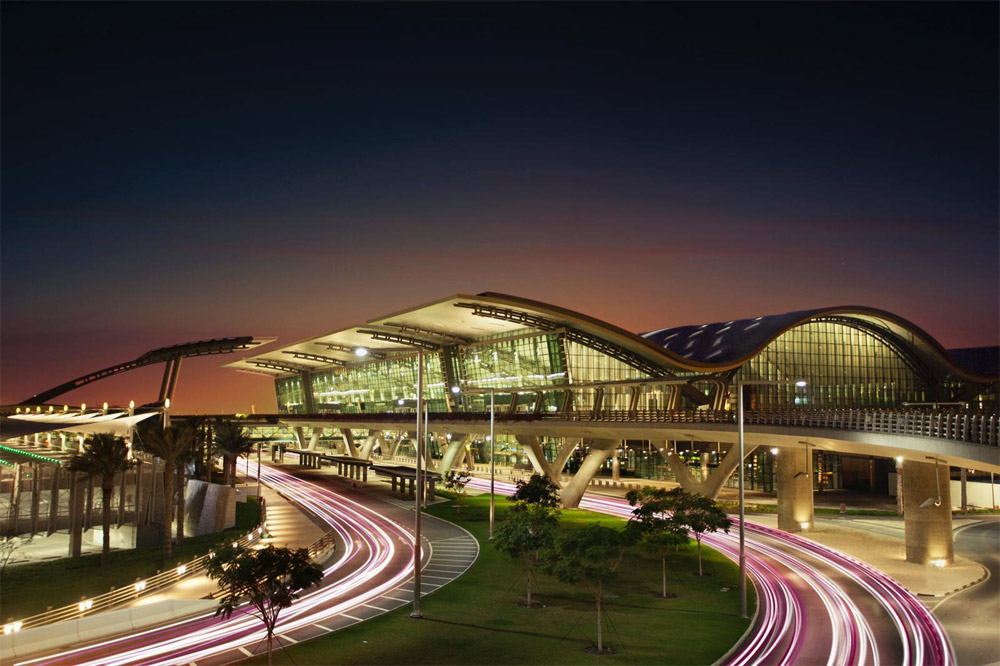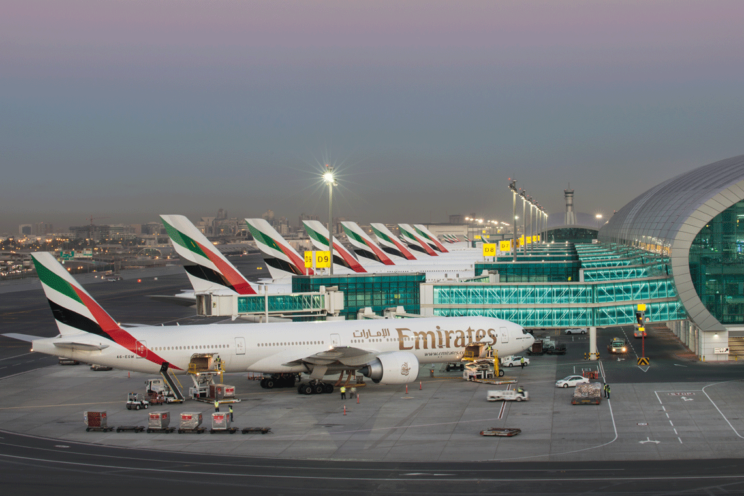
World Airports 2021

The largest cargo airport in the world is Hong Kong, which handled 5,02 million tons (+12,5%). There are 44 cargo carriers in regular transportation, the largest of which are Cathay Pacific Cargo and Cargolux. Pictured is Hong Kong airport.
In the crisis year of 2021, the world's airports served 4,42 billion passengers and 124 million tons of cargo, and communications aircraft performed 69 million takeoff and landing operations. In relation to the previous year, the volume of air transportation increased by 31,5%, 14% and 12%, respectively. Major passenger ports: Atlanta (75,7 million passengers), Dallas/Fort Worth (62,5 million passengers), Denver, Chicago, O'Hare and Los Angeles Cargo ports: Hong Kong (5,02 million tons), Memphis, Shanghai. , Anchorage and Seoul. The top ten ports with the most operations performed are in the United States, with Atlanta (Opera 708), Chicago O'Hare and Dallas/Fort Worth on the podium.
The air transportation market is one of the largest sectors of the global economy. It intensifies international cooperation and trade and is a factor giving dynamism to its development. Communication airports and the airports operating on them are a key element of the market. They are located mainly near urban agglomerations, and due to the large occupied areas and noise immunity, they are usually located at a considerable distance from their centers. There are 2500 communication airports in the world, from the largest, where aircraft perform several hundred operations per day, to the smallest, where they are performed sporadically. Their infrastructure is varied and adapted to the size of the traffic they handle. According to the operational and technical characteristics and the possibility of servicing certain types of aircraft, airports are classified according to the system of reference codes. It consists of a number and a letter, of which the numbers from 1 to 4 represent the length of the runway, and the letters from A to F determine the technical parameters of the aircraft.
The organization that unites airports in the world is the ACI Airports Council International, established in 1991. Represents their interests in negotiations and negotiations with international organizations, air services and carriers, and also develops port service standards. In January 2022, 717 operators joined ACI, operating 1950 airports in 185 countries. 95% of the world's traffic passes there, which makes it possible to consider the statistics of this organization as representative for all aviation communications. ACI World is headquartered in Montreal and supported by specialized committees and task forces and has five regional offices: ACI North America (Washington); ACI Europe (Brussels); ACI-Asia/Pacific (Hong Kong); ACI-Africa (Casablanca) and ACI-South America/Caribbean (Panama City).
Air travel statistics 2021
ACI statistics show that last year, global airports served 4,42 billion passengers, which is 1,06 billion more than a year earlier, but 4,73 billion less than before the 2019 pandemic (-52%). Compared to the previous year, cargo traffic increased by 31,5%, with the largest dynamics recorded in the ports of North America (71%) and South America. (52%). In the two major markets of Europe and Asia, passenger traffic increased by 38% and 0,8%, respectively. In numerical terms, the largest number of passengers arrived in the ports of North America (+560 million passengers) and Europe (+280 million). Changes in the epidemic situation in individual countries had a decisive impact on the results of last year. Most air travel destinations were subject to various types of bans, or flying to certain airports was associated with difficulties, such as having to go into quarantine or testing negative for Covid-19.
In the first quarter, the work of airports was completely overshadowed by tough covid restrictions. From January to March, 753 million passengers were served, which is a decrease of as much as 839 million lanes compared to the same period last year. (-53%). From the second quarter, air transportation began to slowly recover, and this period ended with 1030 million passengers served (23% of the annual result). This is a fourfold increase compared to the quarterly result of 2020 (251 million passengers).
In the third quarter, airports served 1347 million passengers (30,5% of the annual result), which is an increase of 83% compared to the same period of the previous year. The largest quarterly increase in cargo traffic was recorded in the ports of North America (159%), Europe (102%) and South America. In the fourth quarter, the ports handled 1291 million flights. (29% of the annual result), and air travel in individual countries depended on the imposed travel restrictions. Ports in Europe and North America recorded the largest quarterly growth rate of 172% (-128%), while ports in Asia and the Pacific Islands (-6%) suffered losses.
In the scale of all 2021, the vast majority of airports recorded an increase in air traffic at the level of 20% to 40%. In numerical terms, the largest number of passengers arrived at major American transfer hubs: Atlanta (+pass. +33 million), Denver (+25 million passengers), Dallas/Fort Worth (+23 million passengers), Chicago, Los Angeles , Orlando and Las Vegas, on the other hand, declined in: London Gatwick (-3,9 million people), Guangzhou (-3,5 million people), London Heathrow Airport (-2,7 million people). ), Beijing Capital (-2 million people). .), Shenzhen and London Stansted. Of the above ports, the port in Orlando recorded the highest growth dynamics (40,3 million passengers, 86,7% growth), which rose from position 27 (in 2020) to seventh place.

The largest port in the world in terms of the number of international passengers is Dubai, which served 29,1 million people (+12,7%). The airport is used by 98 carriers, the largest of which are Emirates Airline and FlyDubai.
The Covid-19 epidemic did not have a negative impact on cargo transportation. In 2021, the ports handled 124 million tons of cargo, i.e. 15 million tons more than a year ago (+14%), mainly due to the growth of online sales of consumer goods, as well as an increase in demand for air transportation of medical goods. products, including vaccines. The ten largest cargo ports handled 31,5 million tons (25% of the world's cargo traffic), recording a 12% growth rate. Among the major ports, Tokyo Narita (31%), Los Angeles (20,7%) and Doha recorded the greatest dynamics, while Memphis had a decline (-2,9%).
Airports handled 69 million takeoffs and landings last year, up 12% from the previous year. The ten busiest ports, representing 8% of global traffic (5,3 million operations), recorded a growth of 34%, but this is 16% less than it was before the 2019 pandemic), Las Vegas (54%), Houston ( fifty%). %), Los Angeles and Denver. On the other hand, in numerical terms, the largest number of operations was recorded in the following ports: Atlanta (+50 thousand), Chicago (+41 thousand), Denver and Dallas/Fort Worth.
Passenger traffic statistics in ACI World ports show the revival of the largest airports and their return to the top of the rankings. While we are cautious about a long-term recovery, plans to further open aviation markets could lead to their dynamic growth as early as the second half of 2022. ACI World continues to urge governments to keep an eye on the air travel market and further ease travel restrictions. This will boost the recovery of the global economy through aviation's unique role in development: trade, tourism, investment and job creation,” said Luis Felipe de Oliveira, CEO of ACI, summing up last year's performance of the world's airports.